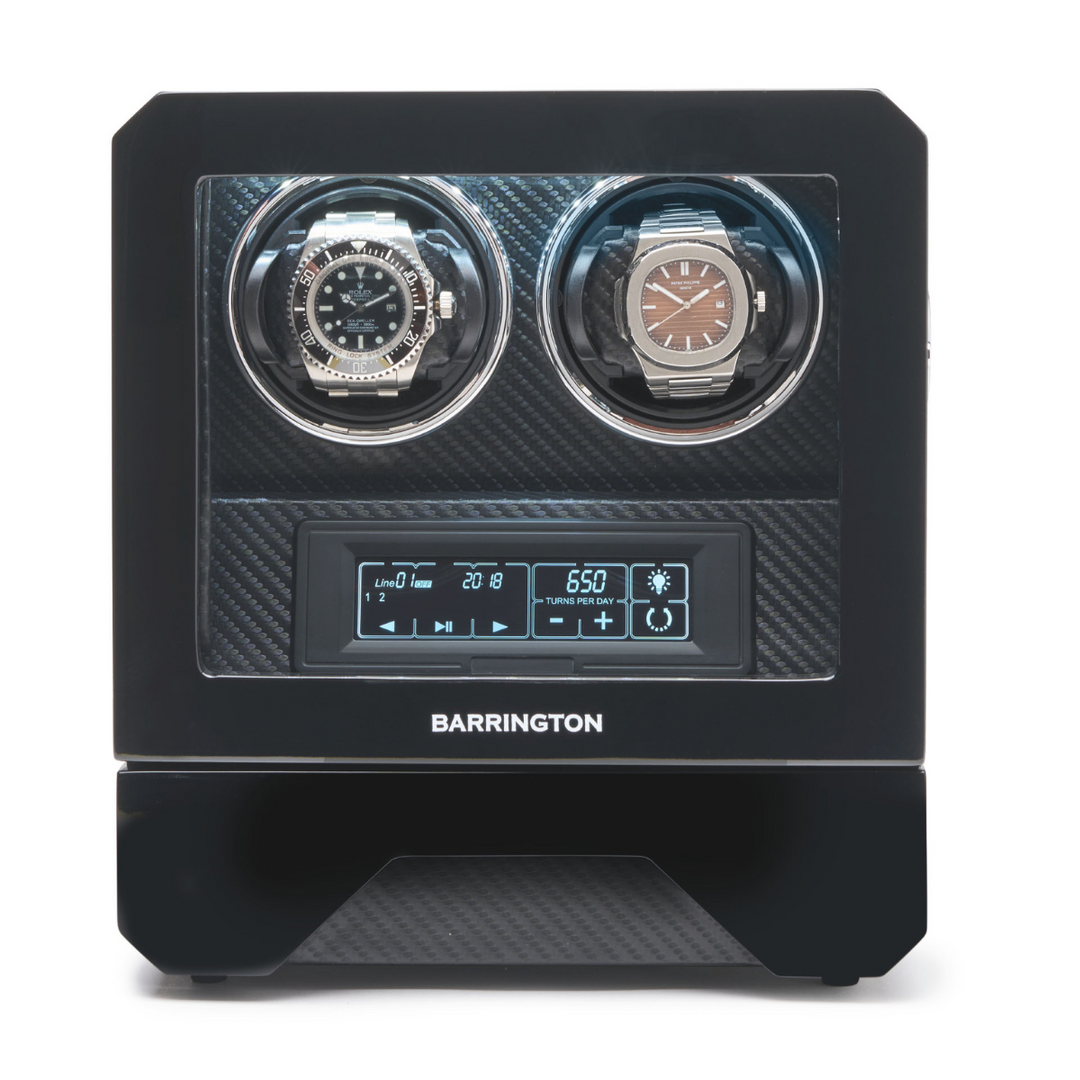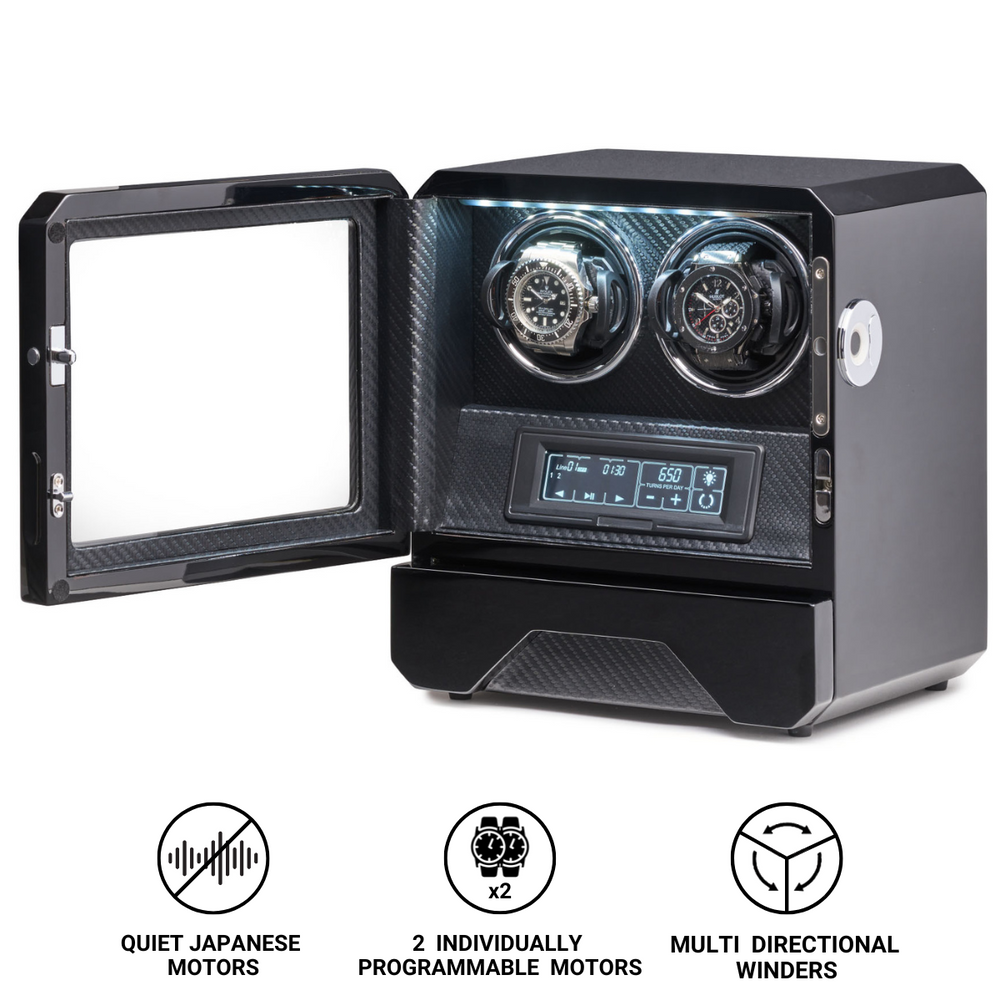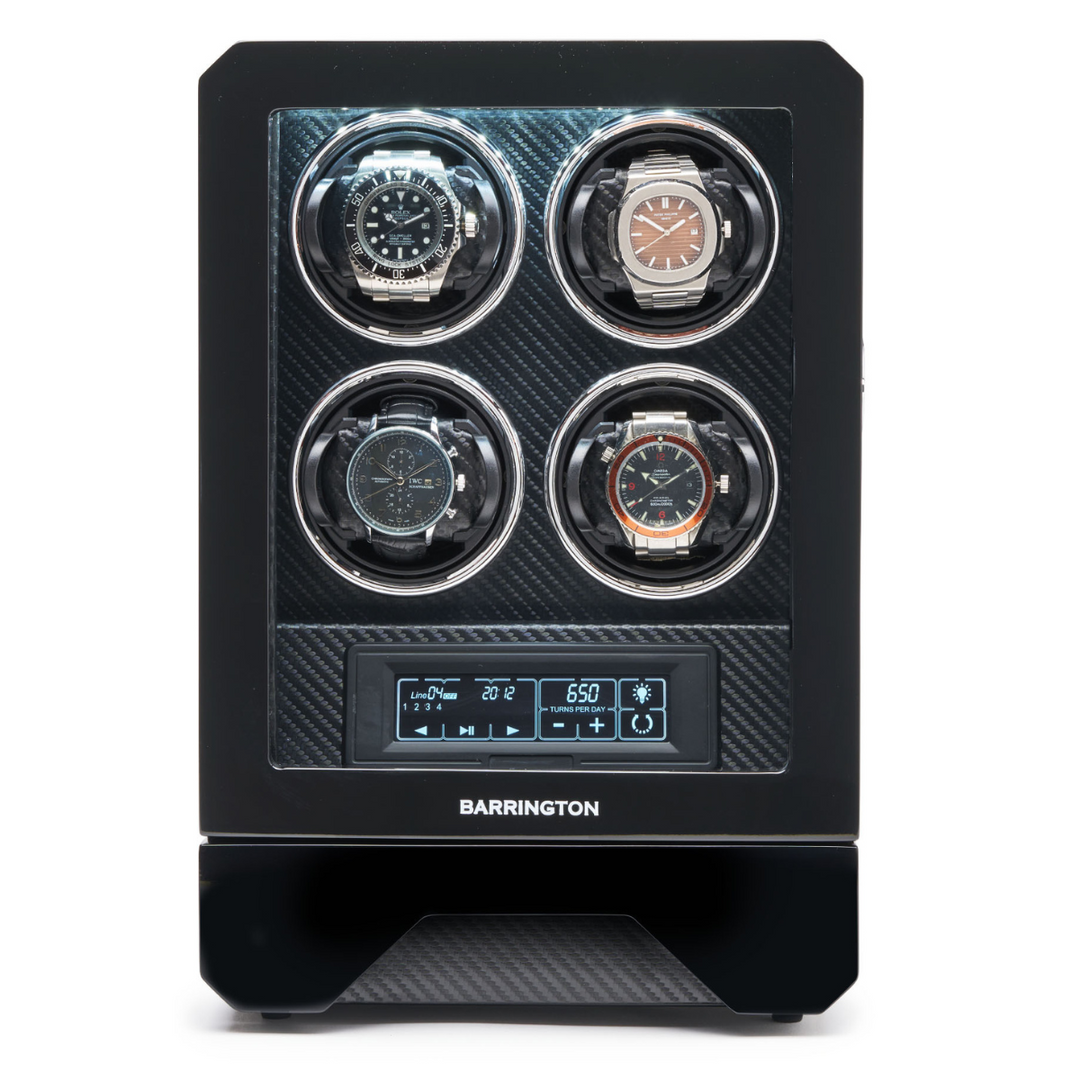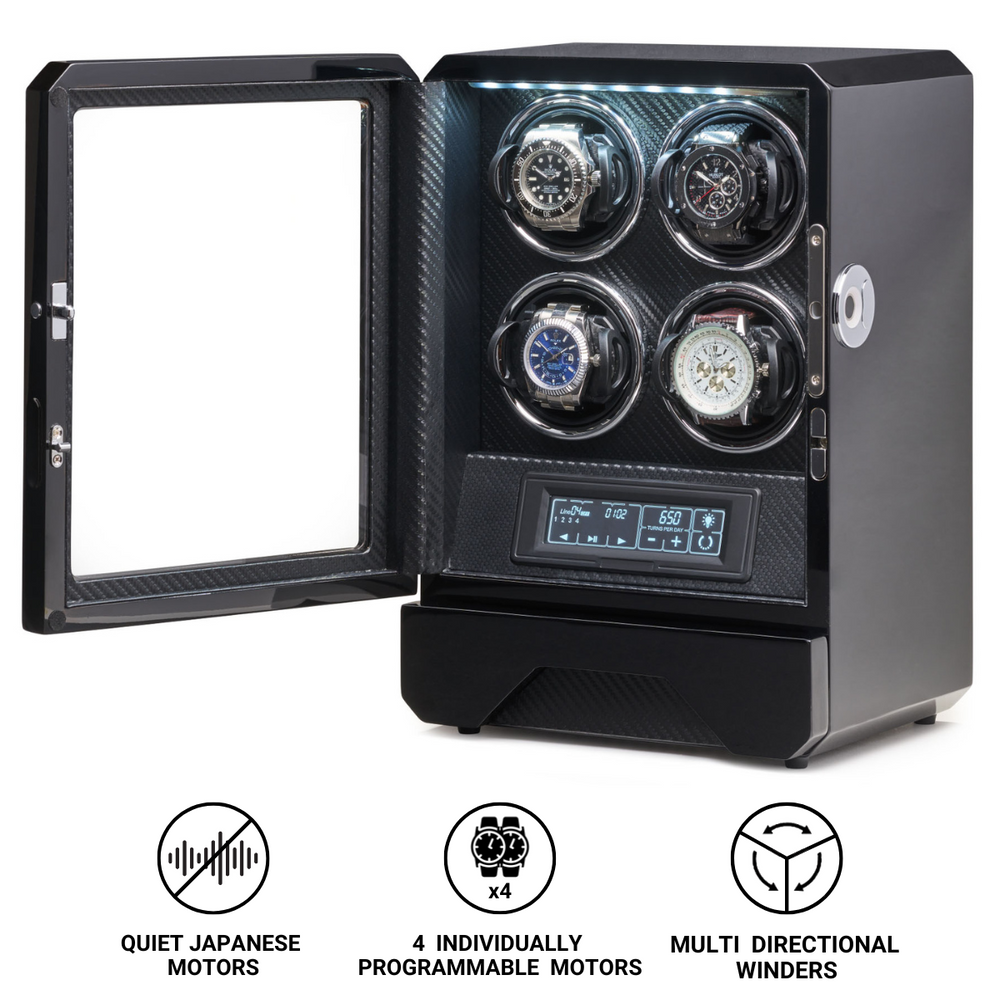Alain Silberstein: History of the watch brand
Key Points:
Alain Silberstein, a French architect-turned-watchmaker, revolutionised horology with Bauhaus-inspired designs, bold colours and geometric forms.
His brand, founded in Besançon in 1987, produced iconic models like the Krono Bauhaus, Krono Tourbillon and Kronosaphir, before closing in 2012.
Collaborations with MB&F and Louis Erard revived his influence, with limited editions such as Le Triptyque becoming instant collector favourites.
Today Silberstein is celebrated as the “architect of watches”, and his legacy continues to inspire independent makers and collectors worldwide.
Few names in contemporary watchmaking spark as much intrigue as Alain Silberstein. Often described as the “enfant terrible” of horology, he built a reputation for challenging convention and refusing to follow the conservative codes of Swiss tradition. With a background not in watchmaking but in interior architecture, Silberstein brought a fresh, avant-garde sensibility to the wrist, blending art, geometry and colour in ways the industry had never seen before.
An architect by training, a designer by vocation and a reformer at heart, Silberstein approached watchmaking as both craft and canvas. His playful yet precise vision disrupted the post-quartz era and redefined what a mechanical timepiece could be – not just an instrument for telling the time, but an expression of joy, individuality and modern art. Today, decades after his debut, his creations remain coveted by collectors worldwide, admired as much for their technical daring as for their unmistakable artistic signature.
Architectural roots and early influences
Alain Silberstein’s creative foundations were laid in Paris, where he studied interior architecture and design. His education was guided by modernist principles that encouraged clarity of form, functionality and the pursuit of harmony between structure and aesthetics. This intellectual background distinguished him from traditional watchmakers, many of whom had been trained within strict horological schools. Silberstein was an outsider, but one with a powerful set of tools: the ability to imagine objects not only as functional instruments but also as works of art in daily life.
The Bauhaus school, though rooted in early twentieth-century Germany, exerted a profound influence on Silberstein’s approach. He was inspired by its insistence on uniting fine art with craftsmanship, and its belief that beauty could be found in simplicity and utility. Figures such as Wassily Kandinsky shaped his creative vocabulary, particularly the association of colour with emotion and shape with meaning. The iconic Bauhaus triad – the circle, triangle and square – combined with the three primary colours red, blue and yellow, would later become the defining visual language of Silberstein’s watches.
For almost fifteen years, Silberstein worked as an interior architect, first in Paris and later in Besançon, a city long regarded as the heart of French watchmaking. This geographical move proved to be pivotal. Living and working in a place where horology permeated local culture gave him direct exposure to the industry. Yet his entry into watchmaking was anything but conventional. By chance, while preparing for an exhibition organised by the French Ministry of Culture, Silberstein presented not only furniture prototypes but also a watch design he had sketched. The piece, playful and bold, captured the imagination of visitors. Although no French watch brand agreed to produce it at the time, a furniture company with manufacturing ties in Hong Kong took the risk, and Silberstein’s first watches were born.
This serendipitous step marked the beginning of his transformation from architect to watch designer. What had started almost as a creative experiment soon grew into a passion. Silberstein realised that watches provided a unique platform: they were intimate objects, worn daily, capable of blending mechanical ingenuity with artistic freedom. Unlike furniture or interiors, a watch allowed him to condense his design philosophy into a small, personal space, where every line, colour and shape carried immediate impact. It was this recognition that propelled him towards Basel in 1987, where his vision would reach an international audience and begin to reshape modern horology.
First projects and debut in 1987
By the mid-1980s Alain Silberstein was ready to translate his artistic vision into the world of watchmaking. His early prototypes, produced with the help of Hong Kong manufacturers, were modest in cost but rich in originality. These watches, often equipped with Japanese Miyota or Swiss ETA movements, revealed an aesthetic that was unlike anything else on the market. Bold colours, playful shapes and an unapologetically modern outlook distinguished them immediately from the conservative designs that dominated the era.
In 1987 Silberstein presented his first collection at the Basel Fair, then and now the most important stage for the international watch industry. It was a daring move for an outsider with no formal horological background, yet his display captured attention. Amid the sea of traditional dials and precious metal cases, Silberstein’s creations looked like an injection of joy – contemporary, artistic and deliberately different. Collectors and journalists took notice, and the designer began to carve out a place in the industry.
The standout piece from this debut was the Krono Bauhaus, which would go on to define Silberstein’s reputation. It was not merely a watch but a statement of intent, a manifesto expressed through colour and geometry. Its distinctive design elements included:
-
Geometric pushers and crown – a red triangle, blue square and yellow circle, each rendered in a bold and playful form.
-
Primary colour palette – red for the hours, blue for the minutes and yellow for the seconds, enhancing legibility while evoking the Bauhaus principles of clarity and function.
-
Clean architectural lines – a dial layout that combined balance and whimsy, making it instantly recognisable.
The Krono Bauhaus made it clear that Silberstein was not interested in reinterpreting tradition. Instead, he sought to reinvent how a watch could look and feel. His vision of horology was not about mimicking the past but about embracing art, humour and optimism. For an industry still recovering from the quartz crisis, it was a bold and refreshing declaration.
Founding of the Alain Silberstein brand
Following the success of his debut at Basel, Alain Silberstein formalised his vision by establishing his own brand in Besançon, the historic capital of French watchmaking. Unlike the Swiss Jura, Besançon was often overlooked on the international stage, yet it provided Silberstein with the right environment to build a workshop that combined creativity with horological know-how. From the outset, his company operated as a true design house, producing small but distinctive collections that placed aesthetics on equal footing with mechanics.
This period coincided with a crucial moment in the watch industry. The devastating impact of the quartz crisis in the 1970s and early 1980s had left mechanical watchmaking struggling for relevance. Many independent makers had disappeared, and larger groups had turned to electronic timekeeping. Silberstein was among the few who believed that mechanical watches could not only survive but thrive if presented in a bold, modern form. His colourful creations stood as a rebuttal to the idea that classicism was the only route to legitimacy in high horology.
In keeping with his background as an architect, Silberstein also experimented fearlessly with materials. While many brands of the era still relied heavily on brass cases or conventional stainless steel, Silberstein introduced innovative choices that enhanced both function and design. These included:
-
Stainless steel – adopted to give his watches the robustness and finish associated with top-tier Swiss brands, a significant step at the time.
-
Titanium – used for its lightweight properties and its compatibility with black PVD coatings, allowing Silberstein to achieve striking visual contrasts.
-
Sapphire crystal cases – an audacious experiment in transparency that pushed the boundaries of what was technically and aesthetically possible in the 1990s.
Through these innovations, Silberstein proved that his brand was not limited to whimsical design. It was also a serious workshop willing to challenge norms and expand the vocabulary of contemporary watchmaking. By the end of the 1990s, his eponymous maison had become an established presence in the world of independents, admired for combining mechanical integrity with unmistakable artistic flair.
Design philosophy
For Alain Silberstein, a watch was never simply a device for telling the time. It was an object of art, a personal companion and often a symbolic marker of life’s stages. He believed that every watch should tell a story, and that story should be immediately legible to the wearer. In his words, a timepiece had to be joyful, emotional and accessible, without ever sacrificing functionality.
Utility was central to his philosophy. Silberstein often pointed out that too many watches were difficult to read at a glance or uncomfortable to wear. His goal was to resolve these issues through design. Legibility, ergonomics and durability were not optional but essential. The dial had to communicate time with clarity, while the case and strap had to feel natural on the wrist. This pragmatic outlook was always fused with playfulness, resulting in watches that were both practical and expressive.
The visual language he employed was unmistakable. Influenced by the Bauhaus masters and their belief in the harmony of form and colour, Silberstein distilled design down to its purest elements: circle, triangle and square. Each of these was linked to a primary colour – red, blue and yellow – creating a system that was intuitive and instantly recognisable. His inspiration also drew from the radical Memphis design movement of the 1980s and from French designer Roger Tallon, whose work on the Mach 2000 watch for LIP left a lasting impression.
The essence of Silberstein’s design language can be summarised as follows:
|
Shape |
Colour |
Function in Silberstein’s watches |
Inspiration source |
|
Triangle |
Red |
Often used for hour indicators and crowns |
Kandinsky’s theory of colour and form |
|
Circle |
Yellow |
Applied to seconds hands and pushers |
Bauhaus emphasis on unity and motion |
|
Square |
Blue |
Frequently seen in minute hands or case details |
Bauhaus and Memphis design |
By embracing this system, Silberstein created a visual identity that was consistent yet endlessly adaptable. His watches were not merely tools but miniature canvases that combined geometry, colour and mechanical precision in a way that spoke directly to both the eye and the emotions.

Source: monochrome-watches.com (Bell & Ross x Alain Silberstein)
Iconic models
Throughout the 1990s and early 2000s, Alain Silberstein produced a series of timepieces that cemented his reputation as one of the most daring and imaginative designers in modern horology. These watches demonstrated not only his command of visual language but also his willingness to engage with technical complications in unconventional ways.
Some of the most celebrated models include:
-
Krono Tourbillon (1997). Silberstein’s first tourbillon was also one of his most ambitious creations. Limited to just ten pieces, the Krono Tourbillon combined a tourbillon escapement with a column wheel chronograph, powered by the Lemania LWO 2387 movement. It revealed that behind the colourful surfaces lay serious horological intent.
-
Kronosaphir. This groundbreaking model experimented with transparency by encasing the movement in a sapphire crystal case. The result was a watch that seemed almost immaterial, floating on the wrist while showcasing both mechanics and design.
-
Nomade Tourbillon. Silberstein also ventured into pocket watches with the Nomade Tourbillon, an unusual and artistic interpretation of traditional horology. It reinforced his view that timepieces should be emotional objects, whether worn on the wrist or carried in the pocket.
Beyond these headline pieces, Silberstein consistently pushed boundaries with his approach to complications:
-
Chronographs with oversized geometric pushers in different shapes and colours.
-
Calendar watches where indicators were playful rather than austere.
-
Power reserve displays designed with humour and charm rather than strict minimalism.
-
Day indicators that replaced text with smiley faces, turning the simple act of checking the weekday into a source of delight.
These experiments revealed Silberstein’s central philosophy: that complications could be both technically impressive and emotionally engaging. His watches balanced serious watchmaking with a sense of joy, making them stand out in an industry often bound by conservatism.
Comments from Barrington Watch Winders: Silberstein’s most daring pieces remind us that watch collecting is about emotion as much as precision. At Barrington Watch Winders, we believe that keeping such creations in perfect working order honours both the artistry and the engineering behind them.
Role in the independent watchmaking movement
Alain Silberstein’s career unfolded at a time when independent watchmaking was beginning to take shape as a serious counterpoint to the dominance of large Swiss maisons. His breakthrough at the Basel Fair in 1987 placed him alongside pioneering figures such as George Daniels, Svend Andersen, Vincent Calabrese and Franck Muller. These were artisans who challenged the industry by creating watches on their own terms, often by hand and in very limited numbers. To be part of this circle as a French outsider with a background in architecture was extraordinary, and it underlined Silberstein’s determination to prove that design could be as important as mechanical virtuosity.
The late 1980s also marked the launch of Orologi, the first dedicated watch magazine, created by Augusto Veroni in 1987. Much like the car magazines of the 1930s that helped establish the automobile industry, Orologi provided independent makers with a platform to reach collectors around the world. Silberstein, with his playful style and instantly recognisable watches, benefitted enormously from this exposure. His work was regularly featured, and his brand began to gain recognition beyond the fairs.
What truly set Silberstein apart in this growing movement was his refusal to mimic the Swiss classical style. While many independents sought credibility by drawing on traditional complications and conservative aesthetics, Silberstein made boldness his hallmark. His watches stood out immediately in display cases: bright colours against monochrome dials, geometric crowns and pushers instead of polished rounds, humour where others chose solemnity. For collectors fatigued by formality, Silberstein’s work felt like a breath of fresh air.
By embracing independence not only in business structure but also in spirit, Alain Silberstein helped broaden the definition of what an independent watchmaker could be. His example demonstrated that creativity and design were as vital to horology as finishing and complications, paving the way for future generations of watchmakers and designers who wished to step outside convention.
Closure of the company in 2012
By the early 2010s the challenges of running a small independent brand had become increasingly difficult. Alain Silberstein’s watches, while admired for their originality, occupied a highly specialised niche. The market was shifting towards the dominance of major Swiss groups, with their vast marketing budgets and global distribution networks, leaving little space for smaller maisons to compete on visibility and scale.
Economic realities also played their part. The 2008 financial crisis had reshaped luxury consumption, with many buyers leaning towards safer, more traditional designs. Silberstein’s bold, playful creations appealed to collectors with a taste for individuality, but the audience was not broad enough to sustain the brand at the level required for long-term stability. By 2012, after twenty-five years of independence, Alain Silberstein made the difficult decision to close his company.
The closure, however, did not diminish his reputation. On the contrary, it amplified the desirability of his watches on the secondary market. Collectors recognised that no new pieces would be produced under his name, and demand for existing models rose. Limited editions such as the Krono Bauhaus, the Kronosaphir and the Tourbillon pieces became highly sought after, their scarcity adding to their allure. For enthusiasts, owning a Silberstein watch was no longer just about design but also about preserving a piece of modern horological history.
Today, the 2012 closure is seen less as an end and more as a turning point. It closed one chapter of Silberstein’s career but opened the way for collaborations and projects that would carry his distinctive vision into a new era.
The Perfect Companion for Your Automatic Watch
For collectors, owning a watch by Alain Silberstein or any fine automatic timepiece is not only about wearing art on the wrist but also about preserving it for the future. Proper care is essential to keep these mechanical creations in perfect working order, and that is where a quality watch winder becomes indispensable. At Barrington Watch Winders, we design precision-engineered winders that combine elegance with reliability, ensuring your automatic watches are always ready to wear and displayed in style.
Barrington Single Winder - Midnight Blue
(The Barrington Single Winder in Midnight Blue represents the perfect blend of form and function, designed for collectors who expect both elegance and technical reliability. Compact yet striking, it offers fully customisable rotation settings with clockwise, counter-clockwise or alternating modes, along with multiple Turns Per Day options to suit any automatic watch. Powered by a precision Japanese motor, the winder operates with whisper-quiet smoothness, making it equally at home in a bedroom, office or display cabinet. Its rich midnight blue finish adds a refined touch, ensuring that your timepiece is not only maintained but also beautifully presented.
Practicality is at the heart of its design. The winder can be powered by either AC mains or AA batteries, and thanks to the Barrington ‘Jump’ feature, multiple units can be connected and powered from a single source, creating a seamless modular display for larger collections. A choice of cushions allows for a perfect fit regardless of wrist size, while the LED indicator adds a subtle note of modern sophistication. More than just a tool, the Barrington Single Winder – Midnight Blue is an expression of thoughtful engineering, keeping your watch in prime condition while elevating the way it is stored and displayed).
Barrington Special Edition Single Winder - American Walnut (unvarnished)

(The Barrington Special Edition Single Winder in unvarnished American Walnut combines natural elegance with advanced engineering, making it a refined choice for discerning collectors. Its compact wooden casing, left unvarnished for a raw and authentic finish, highlights the beauty of the material while housing a whisper-quiet Japanese motor that ensures smooth and reliable operation. With multiple rotation modes, a wide range of Turns Per Day settings and the flexible Barrington ‘Jump’ feature for connecting additional winders, it offers versatility to suit any automatic watch. Powered by either AC mains or AA batteries, this piece brings together practicality, understated style and the craftsmanship needed to keep your timepieces perfectly maintained).
6 Watch Winder

(The Barrington Six Watch Winder is a statement piece of engineering and design, created for serious collectors who want both security and style. Housed in a sleek gloss display cabinet with carbon-effect detailing, it features six individually programmable rotors, each offering multiple rotation directions and Turns Per Day settings to match the exact needs of your watches. Access is secured with an advanced fingerprint scanner for up to 20 prints, while a digital touchscreen and full-function remote control make adjustments effortless. Ultra-quiet Japanese motors ensure silent performance, LED downlighters highlight your collection beautifully, and an integrated drawer provides storage for additional timepieces. This winder is not only a practical solution but also an elegant showcase, keeping your watches safe, precise and always ready to wear).
A watch winder is more than a practical accessory; it is a statement piece that complements the beauty of your collection. Whether you own a playful Silberstein, a classic Rolex or a modern Omega, Barrington Watch Winders offer the perfect balance of protection, performance and presentation. By keeping your watches wound, safe and beautifully showcased, they allow your collection to shine every day.
Era of collaborations
Although Alain Silberstein closed his own brand in 2012, his creativity did not fade. On the contrary, the years that followed became some of the most fruitful of his career, marked by collaborations with leading independent watchmakers and design-driven maisons. These projects allowed Silberstein to apply his unmistakable style while exploring new territories in horology.
Key collaborations include:
-
MB&F
-
HM2.2 “Black Box” (2009) – A radical reinterpretation of MB&F’s Horological Machine No. 2, designed with Silberstein’s signature black case and geometric forms.
-
Legacy Machine No.1 (2011) – Silberstein contributed his design language to one of MB&F’s most important projects, demonstrating his ability to merge playfulness with architectural mechanics.
-
Louis Erard x Alain Silberstein
-
Excellence Regulator (2019) – Silberstein reimagined the classic regulator dial with bold colours, geometric hands and playful visual balance. The watch sold out rapidly and won wide acclaim.
-
Red Dot Award (2021) – The collaboration received international recognition for product design, proving Silberstein’s enduring relevance.
-
Le Triptyque (2021) – A trilogy of limited-edition watches created with Louis Erard:
-
La Semaine – featuring a whimsical day-of-the-week indicator using smiley faces.
-
Le Régulateur II – a vibrant reinterpretation of the regulator format.
-
Le Chrono Monopoussoir – a bold monopusher chronograph, playful yet mechanically refined.
All three were produced in runs of 178 pieces, a symbolic number adopted by Louis Erard to signify “stronger together”. -
Romain Jerome – Silberstein collaborated with the Swiss brand known for unconventional materials, contributing his distinctive design language to special editions.
-
UTINAM Besançon – Together with clockmaker Philippe Lebru, Silberstein designed the KB2 floor clock, launched in 2021. This large-scale creation transported his playful Bauhaus style from the wrist to interior spaces.
These collaborations underscored Silberstein’s lasting influence. Freed from the constraints of running his own company, he was able to focus purely on creativity, applying his philosophy of colour, geometry and joy to projects that resonated strongly with collectors and design enthusiasts alike.
Comments from Barrington Watch Winders: Collaborations allowed Alain Silberstein to share his playful vision with a wider audience. For collectors, a high-quality watch winder ensures these modern classics remain accurate, safe and ready to wear at any moment.
Modern projects and return
In recent years Alain Silberstein has hinted at a full revival of his name in contemporary watchmaking. After more than a decade of working primarily through collaborations, he announced plans in 2023 to re-establish his brand with a renewed focus on creativity and exclusivity. The relaunch, expected to unfold gradually from 2023 into 2024, reflects his desire to once again produce watches under his own signature while adapting to the realities of the modern industry.
One of the most important initiatives accompanying this return is the preparation of a catalogue raisonné, documenting more than 480 of his creations from 1987 to the present. This comprehensive archive is intended not only as a reference for collectors but also as a celebration of his enduring vision. It will serve as a reminder that Silberstein’s body of work spans far beyond a few cult models and encompasses a rich and diverse creative output.
Alongside this project, Silberstein has expressed interest in developing new movements in partnership with independent specialists, allowing him to bring fresh mechanics to his distinctive designs. He has also outlined plans for an international repair and certification service, ensuring that existing Silberstein timepieces can be properly maintained and authenticated for future generations.
Taken together, these modern initiatives show that Alain Silberstein’s career is far from over. Rather than looking back nostalgically, he continues to evolve, using his unique artistic vocabulary to push forward in a watch industry that increasingly values individuality and independent voices.
Legacy and influence
Alain Silberstein is often described as the “architect of watches”, a title that reflects both his professional training and his approach to design. Like an architect, he conceived timepieces as complete works in which form and function must exist in harmony. His watches are not the result of ornamental decoration but of carefully structured ideas, distilled into shapes, colours and proportions that feel both playful and purposeful.
His influence on contemporary horology is significant. Many independent watchmakers who emerged after him cite Silberstein as proof that originality can succeed alongside tradition. He showed that independence in watchmaking does not need to mean producing austere, technically driven pieces alone; it can also mean embracing artistic freedom, humour and joy. His language of pure geometry and colour has inspired a generation of designers to think beyond the boundaries of conventional dials and cases.
In fashion, Silberstein’s role has often been compared to that of Jean-Paul Gaultier. Just as Gaultier brought irreverence and freshness to haute couture, Silberstein introduced wit and colour into the often solemn world of horology. Both figures challenged norms, delighted in subverting expectations and proved that playfulness could coexist with craftsmanship of the highest order.
For British collectors in particular, Silberstein’s work holds a special appeal. The combination of artistry, humour and horological integrity resonates with a culture that values individuality and understatement. His watches, with their flashes of colour and unconventional details, offer a way to stand out without ostentation. They are conversation pieces that blend mechanical seriousness with a lightness of spirit, embodying qualities that make them enduringly desirable in the United Kingdom and far beyond.
Conclusion
Alain Silberstein remains a symbol of freedom within contemporary horology. His watches are not simply instruments for measuring time but statements of identity, creativity and independence. By bringing art, humour and bold design into an industry often bound by tradition, he showed that a timepiece could be as much a manifesto as it is a mechanical object. His closure in 2012 did not diminish this spirit; instead it strengthened his cult status, and today his legacy continues to inspire both established watchmakers and new generations of independents.
For collectors, Silberstein’s work is a reminder that watches deserve to be celebrated as objects of art. At Barrington Watch Winders, we share the same philosophy of combining technical precision with elegant design. Just as Silberstein’s creations deserve to be kept in perfect condition, our precision-engineered watch winders ensure that automatic timepieces remain accurate, protected and beautifully displayed. His story is one of passion and originality, and it continues to echo every time a collector sets a Silberstein watch on the wrist – or places it safely in a winder for the future.
FAQ: Alain Silberstein – History of the Watch Brand
Who is Alain Silberstein and why is he important in watchmaking?
Alain Silberstein is a French designer and former architect who became one of the most distinctive voices in contemporary horology. He is known for bringing colour, geometry and humour into an industry that was often dominated by conservative Swiss traditions. His work challenged expectations and gave collectors a fresh way to enjoy mechanical watches.
What makes Alain Silberstein’s design philosophy unique?
Silberstein’s philosophy combines utility with playfulness. He focused on legibility, comfort and durability, while using bold colours and geometric shapes inspired by Bauhaus and modernist art. The result was a design language that made his watches instantly recognisable and deeply personal for those who wore them.
Why did Alain Silberstein close his brand in 2012?
The closure was largely due to the economic realities of running an independent brand in a market dominated by major luxury groups. After the financial crisis of 2008, demand shifted towards safer and more traditional designs, which limited Silberstein’s niche appeal. Despite this, the closure only increased the desirability of his earlier watches among collectors.
What are some of Alain Silberstein’s most iconic watches?
Among his most celebrated models are the Krono Bauhaus, the Krono Tourbillon of 1997, the transparent Kronosaphir and the Nomade Tourbillon pocket watch. He also became known for playful complications such as day indicators featuring smiley faces instead of weekdays. These pieces highlight his ability to merge serious horology with a sense of joy.
Why are Alain Silberstein watches valued by British collectors today?
British collectors often appreciate watches that balance individuality with craftsmanship. Silberstein’s creations combine high quality mechanical movements with artistic design, making them both functional and expressive. They are conversation pieces that reflect taste, personality and a willingness to embrace something different in a world of conventional luxury.














